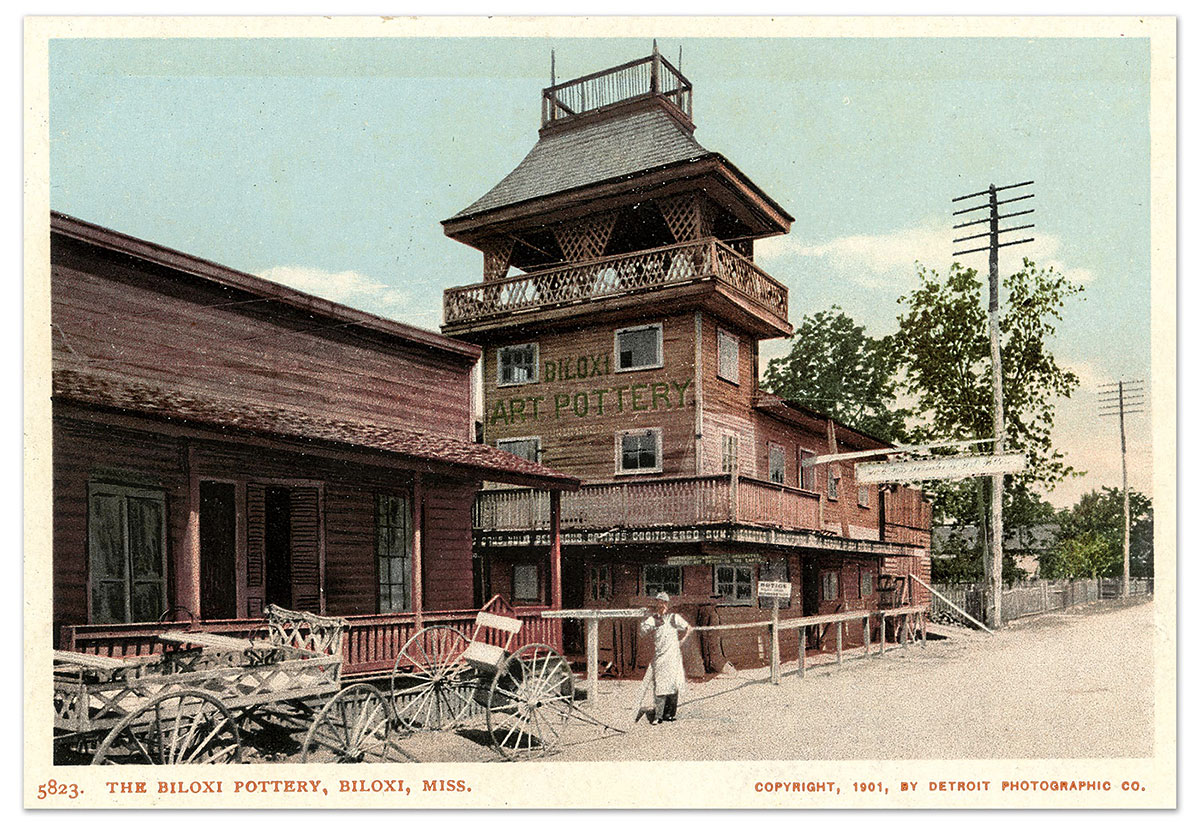George Edgar Ohr (1857-1918), the “Mad Potter of Biloxi”, was an artist with a vision that was ahead of his time. Although active from 1879 until around 1910, it was not until his pottery was rediscovered half a century after his death that Ohr began to enjoy the reputation he felt he deserved. Ohr studied under Joseph Fortune Meyer, of Newcomb College Art Pottery, and moved freely between New Orleans, Louisiana and Biloxi, Mississippi for much of his career. Through his association with Meyer and extensive travels to attend fairs and expositions, Ohr was exposed to some of the best work of the Arts & Crafts movement and the American Renaissance. His work, however, would evolve technique in a way that set him apart from his contemporaries.
During the first period of his career (1879-1894), Ohr focused on utilitarian pieces to support his family. The decade between 1884 and 1894 were difficult for the Ohr family both personally (two of his ten children would die in the decade) and professionally. Bookending this period were two catastrophic professional losses. In 1884 Ohr attended the World’s Industrial and Cotton Centennial Exposition in New Orleans and hired a man to return 600 pieces of his work to Biloxi; neither the man nor the pottery ever reached Biloxi and Ohr never recovered his stolen pieces. In 1894 tragedy struck again when a fire in downtown Biloxi destroyed Ohr’s work and his studio. Always personally attached to his work, Ohr kept many pieces salvaged from the fire and called them his “burned babies”.
“When I found the potter’s wheel, I felt it
all over like a wild duck in water.”– George E. Ohr
The years after the fire became some of the most innovative and prolific of Ohr’s career. Between 1895 and 1903, Ohr experimented with shape and color, creating unbelievably thin pieces that twisted, ruffled, and folded. Ohr’s son, Oto, said of his father, “His pottery was made as thin as a piece of newspaper. He could make it any kind of shape you wanted. It was a gift to him.” These vibrant glazes and distinctive forms have become synonymous with Ohr and are considered to be some of his finest work.
The clay Ohr used throughout his career was sourced from the local Tchoutacabouffa River. Unlike many potteries in the late nineteenth century, Ohr was essentially a one-man operation; he dug and processed his own clay with only the assistance of his apprentice Henry Portman and threw every piece personally. The final period of Ohr’s career saw a major shift, now only did his production slow down significantly but he also stopped glazing his pottery. These bisque pots are the most abstract and sculptural of Ohr’s work.
Ohr had an unshakeable faith in the merit of his work and wanted to be recognized by having one entity purchase his collection in its entirety. To that end he made offers to the Delgado Museum of Art (now the New Orleans Museum of Art) and the Smithsonian. Disheartened by his lack of success, Ohr closed his pottery in 1910, packed away his collection, and asked that his heirs keep the collection untouched until 50 years after his death. Only a few years after the request expired, an antiques dealer from New Jersey, James Carpenter, purchased the entire collection from the Ohr family. He began introducing Ohr’s work to art collectors in the northeast USA and Ohr’s reputation quickly spread. By the 1970s, nearly a hundred years after his career began, Ohr was finally recognized as the master he was. He died in 1918, at the end of World War One and during the flu pandemic of that year.
I KNOW
I’m quaint & very queer,
So is my work, so I appear;
As I write I likewise talk & work,
& otherwise I could not B-
I am no poet, but just mud-
And term myself
POT-OHR-E.


